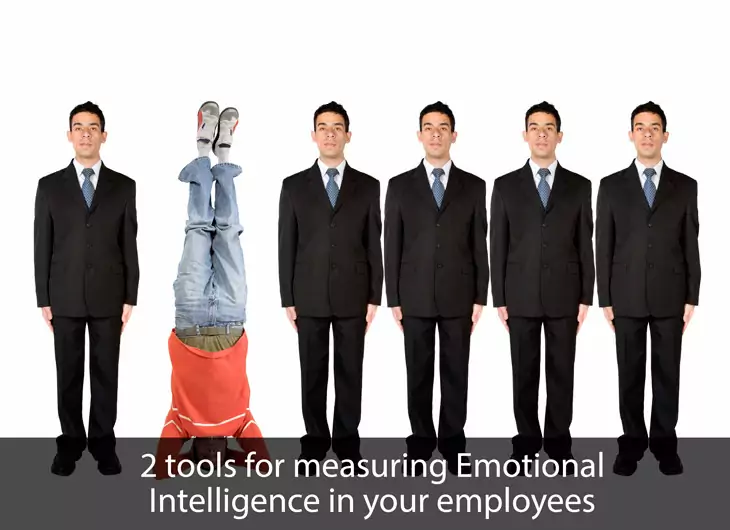eLearning Assessment of Emotional Intelligence

If you’ve taken to heart the latest trends in eLearning for soft skills training, then you know that emotional intelligence (EI) is a high-priority area for learning. Indeed, Daniel Goleman, who played a key role in popularizing the concept, conducted competency research on hundreds of companies all over the world and found that technical skills and IQ could only account for one third of performance variance. The remaining two thirds of variance could be accounted for by emotional intelligence, which means there’s a lot at stake here. But once you’ve got your learning content in place to leverage emotional intelligence among your employees, how will you measure the effectiveness of their learning and practice? What you need is an EI assessment tool.

Before getting into the details of two different assessment tools, however, it’s important to understand how EI developed. Although Goleman is credited with popularizing the idea of Emotional Intelligence with his books like Emotional Intelligence, Working with Emotional Intelligence and Primal Leadership, he didn’t invent it. The phrase was actually coined by Peter Salovey and John Mayer. They defined EI as a kind of social intelligence that is comprised of the ability to monitor one’s own and others’ feelings and emotions, being able to discriminate among them, and then use that information to guide one’s thinking and action.
When Goleman came along, he added several competencies that the Salovey-Mayer team (later joined as well by David Caruso) argued made the concept too broad, not to mention that a few of Goleman’s competencies are considered by many to be personality traits that are relatively fixed. The real appeal of EI lies in the fact that it can be learned.
What’s interesting about these two different approaches to emotional intelligence is that over time they have evolved to become increasingly similar. In fact, I would argue that you don’t really have to choose between the two models because they’re really much the same, and can be combined as follows:
Self-Management Skills
- Self-Knowledge. Accurately perceiving and knowing one’s own emotions, strengths, weaknesses, drives, values, and goals, as well as how they impact on others.
- Self-Control. Controlling or redirecting disruptive emotions and impulses. But there’s also a sense of self-management or self-regulation that control doesn’t quite capture. Actually, self-mastery is what we’re really talking about here – gaining mastery over your emotions.
- Motivation. Being driven to achieve for the sake of achievement.
Relationship Skills
- Empathy. Accurately perceiving as well as considering others’ feelings, especially when making decisions. Understanding how emotions change as well as how they change people and the behaviors they display over time.
- Social Skill. Managing relationships to move people in desired directions by integrating logic and emotion for effective influence.
One of the ways the models did wind up being substantially different is in how they each measure EI. The Salovey-Mayer-Caruso model utilizes the Mayer-Salovey-Caruso Emotional Intelligence Test while the Goleman model makes use of the Emotional Competence Inventory 360 or ECI 360°. The former is an ability or performance test while the latter is a self-report measure that gives you the option of making use of others’ ratings of the test subject if you wish.
If you’re a stickler for scientific proof, you would lean towards the first option because the Mayer-Salovey-Caruso Emotional Intelligence Test has been rigorously vetted and proven accurate in many studies. The fact that Goleman’s inventory is largely a self-report measure means that some view it as less scientifically rigorous because people may not always tell the truth when self-reporting. Using the 360-degree feedback part of the measure can help counter that to some degree. In the end, I find if you’re not trying prove anything scientifically, then Goleman’s inventory is probably the best tool to use because it makes so much sense to everyone on an intuitive level.
That gives you two solid tools for measuring EI in your employees, both before and after their eLearning experience in order to assess the effectiveness of what they’ve learned and how they put it into practice.